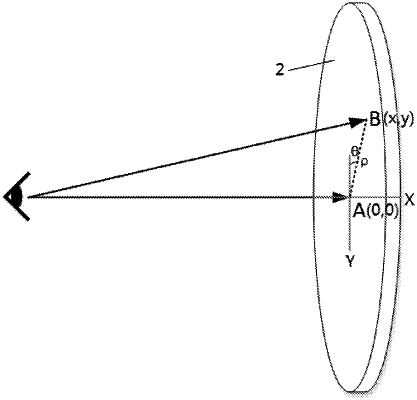| CPC G02B 27/0172 (2013.01) [G02F 1/13306 (2013.01); G06F 3/013 (2013.01); G02B 2027/011 (2013.01); G02B 2027/014 (2013.01); G02B 2027/0138 (2013.01); G02F 2203/01 (2013.01); G02F 2203/18 (2013.01)] | 8 Claims |

|
1. An imaging method for a head-mounted display, comprising:
detecting a wavefront of a beam emitted by the head-mounted display through its optical system;
acquiring a position of a visual axis of a human eye;
calculating a deviation between the visual axis of the human eye and an optical axis of the optical system; and
adjusting a wavefront incident to the human eye according to the deviation, so that a correspondence between the wavefront incident to the human eye and the visual axis is consistent with a correspondence between the wavefront of the beam emitted from the optical system and the optical axis,
wherein calculating the deviation between the visual axis of the human eye and the optical axis of the optical system comprises:
establishing a rectangular coordinate system by performing cross calibration with an intersection point of the optical axis of the optical system and a display screen as an origin A (0,0);
acquiring coordinates (x, y) of the fixation point B; and
calculating a distance ρ between points A and B and an included angle θ between a connection line of points A and B and Y axis,
adjusting the wavefront incident to the human eye according to the deviation comprises:
calculating, by using a Zernike polynomial, wavefront data W2 of the human eye when looking at the fixation point B according to the ρ and θ;
calculating a relative change of wavefront aberration ΔW according to the wavefront data W2 and wavefront data W1 of the beam emitted from the optical system; and
adjusting the wavefront incident to the human eye according to the relative change ΔW to achieve wavefront correction.
|